The LapAR Pro comes with unlimited Totum user licenses allowing training centres to track the performance of all their surgeons with a fixed, transparent cost. Totum provides a range of resources to guide the way to surgical success including:
My connections – Connect to your trainees and remotely review their training progress and results.
Manage tasks – Set tasks for trainees, track their progress with completion, receive alerts when deadlines have passed.
Video library – Review full procedural videos, provide written qualitative feedback. Feedback time stamped to video for ease of follow up review by the trainee.
Admin area – Allocate medical models to trainees from your central model repository and track the number of models in your repository.
To facilitate practice in ipsilateral port placement and suturing, additional side panels are also available for purchase.
LapAR
Specifications
- Can be converted to table top mounting
- Not for human use
- Requires assembly
What's Included
LapAR Pro
- 1x LapAR box trainer with integrated 1080p USB camera
- 1x model mounting jig and abdominal wall skin
- 5x laparoscopic instruments: Maryland, Johans, scissors, needle holder (x2)
- 1x LapPass kit
- 1x pack of sutures
- 1x mobile trolley system with adjustable operating height
- 1x Integrated computer with LapAR software pre-installed
- 1x 22” touch screen monitor
- Unlimited user licences
- Admin access to Totum
Downloads
Request a quote
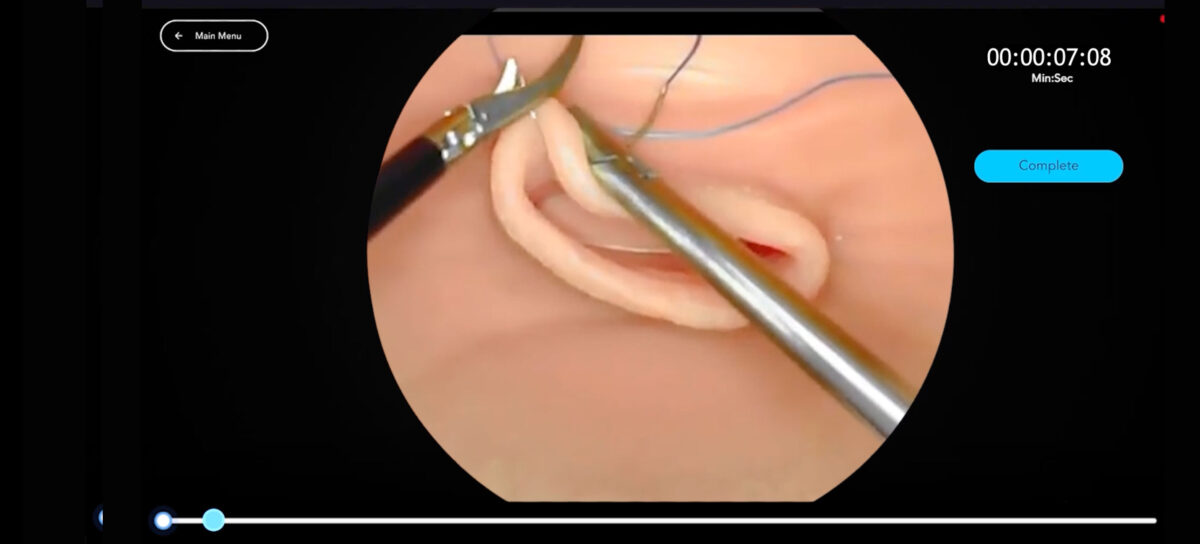
MIGS specific suturing module.
Vaginal Vault Closure
The laparoscopic vaginal vault closure is a minimally-invasive-gynaecologic-surgical (MIGS) procedure to close the proximal or top part of the vaginal canal, often following a hysterectomy. The indication is to support the vaginal walls and prevent prolapse.
The model allows you to focus on the closure part of a Hysterectomy, and supports the use of all suture materials and closure methods.
You can use this model several times.
This module allows the surgeon to perform the final step of a TLH by closing the Vaginal Vault.
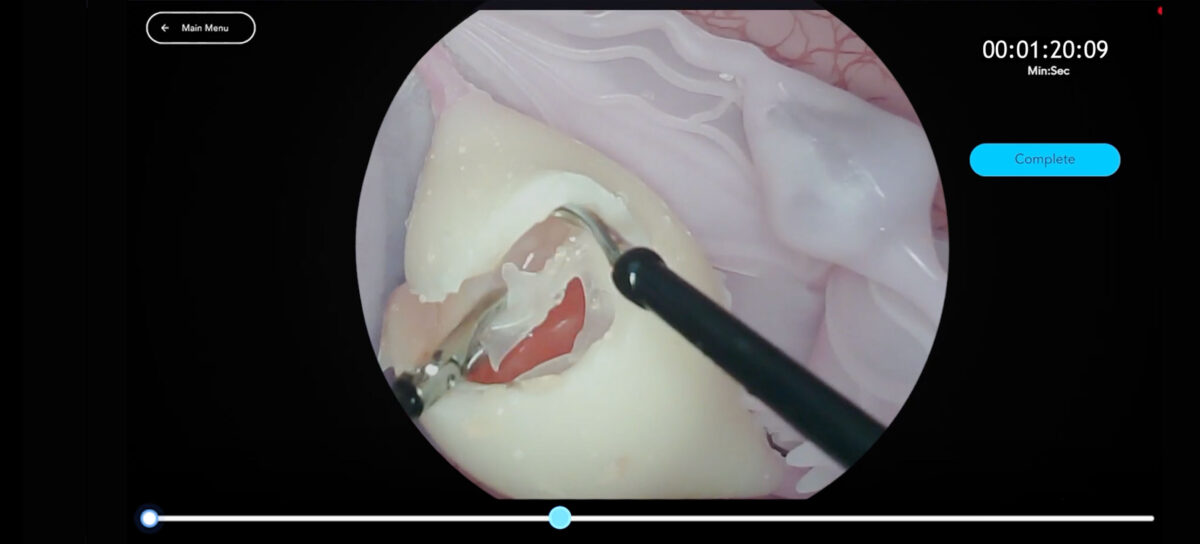
Right sided removal of an Ovarian Cyst.
Ovarian Cystectomy
A laparoscopic ovarian cystectomy is a minimally invasive approach to dealing with painful, large and harmful cysts on the ovary. The cysts generally measure 5-7cm, and great care must be taken to preserve the ovary of a pre-menopausal patient. This process includes the careful dissection of the cyst capsule, without damaging the cyst membrane - the aim is to remove the cyst and strip it from the ovary. Once removed, the ovary can be sutured closed, depending on the size and condition of the defect caused by the pathology and procedure.
On this Inovus model, the surgeon can also perform a salpingostomy and salpingectomy, to get the most out of the model provided.
If you prefer to have these split up in separte videos, complete the ovarian cystectomy, and go back to the module menu and select the surgery you wish to perform on the same model.
This model is compatible with ultrasonic devices.
This module allows the surgeon to perform an Ovarian Cystectomy, using careful dissection and manipulation to remove the fluid filled cyst without puncturing it.
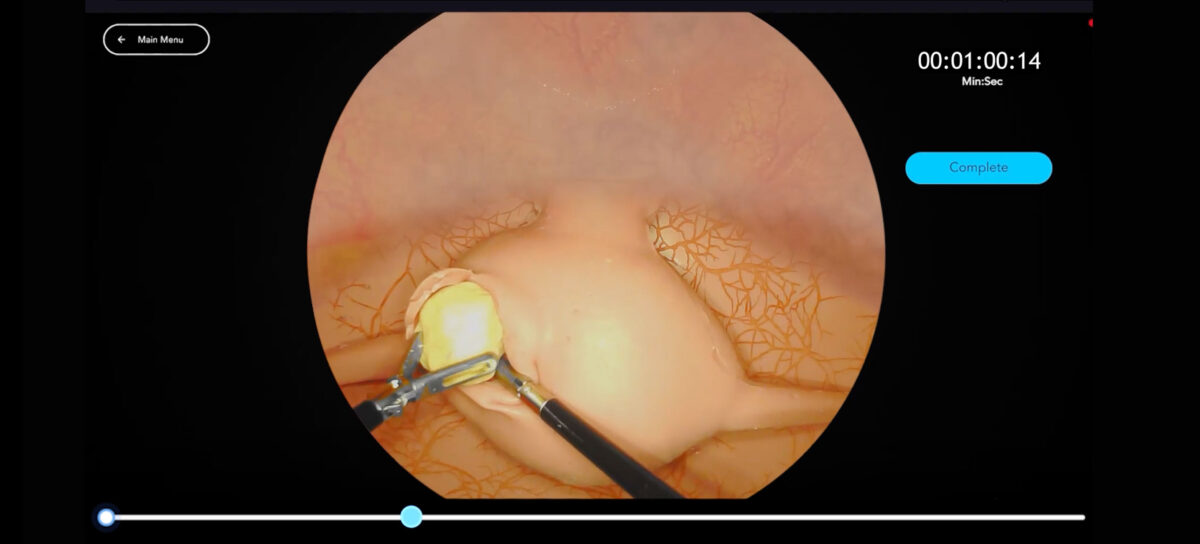
Enhanced MIGS module for Laparoscopic Myoma removal.
Laparoscopic Myomectomy
The laparoscopic Myomectomy is a minimally-invasive-gynaecologic-surgical (MIGS) procedure to remove fibroids from the uterus. The fibroids are regularly subserosal, submucosal or intramural. Growths larger than 4cm warrant surgical intervention.
This model has two fibroids that can be removed during this module - subserosal and subucosal - see their location withing the ‘model anatomy’ section of this page.
To enhance your experience, consider sourcing instrumentation in line to what you would have in theatre such as specimen removal bags or toothed laparoscopic graspers.
The module allows the surgeon to complete two Myomectomies in one model. One large Submucosal and one Subserosal.
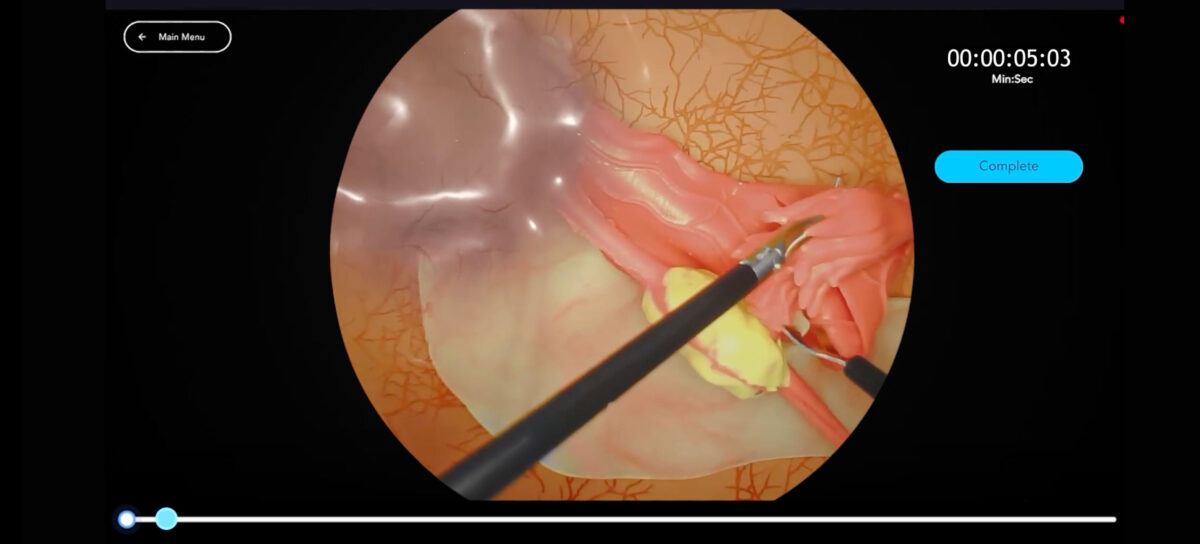
Left and right sided models available.
Salpingectomy
The laparoscopic salpingectomy is a minimally-invasive-gynaecologic-surgical (MIGS) procedure to remove one or both of the fallopian (uterine) tubes. The indication for the procedure is as part of the hysterectomy. Other indications include complicated ectopic pregnancy, infections, mechanical damage, and to reduce the risk of ovarian cancer.
This model allows you to practice both Salpingostomy and Salpingectomy procedures on one model.If you wish to do so, please ensure you complete the Salpingostomy module FIRST before attempting this module. Once completed, you can also attempt the Pelvic Wall Dissection module, found in the main menu.
This module allows you to complete a full Salpingectomy, now with enhanced anatomical realism.
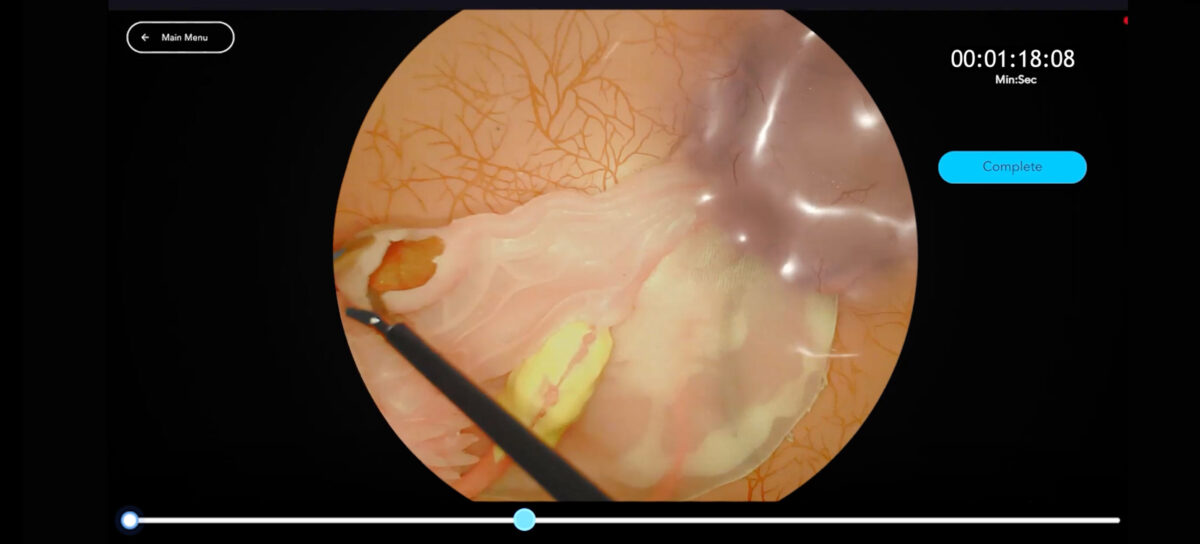
Left and right sided models available.
Salpingostomy
A Laparoscopic Salpingostomy is a procedure that allows you to treat Ectopic Pregnancies. This approach allows the surgeon to spare the Fallopian Tube rather than the conventional approach of a Salpingectomy. This will be done if the patient has a fertility compromising condition, such as a previous salpingectomy.
This model allows you to practice both Salpingostomy and Salpingectomy procedures on one model.If you wish to do so, please ensure you complete the Salpingostomy module FIRST before attempting this module. Once completed, you can also attempt the Pelvic Wall Dissection module, found in the main menu.
Use your laparoscopic skills to remove the ectopic pregnancy by performing a Salpingostomy.
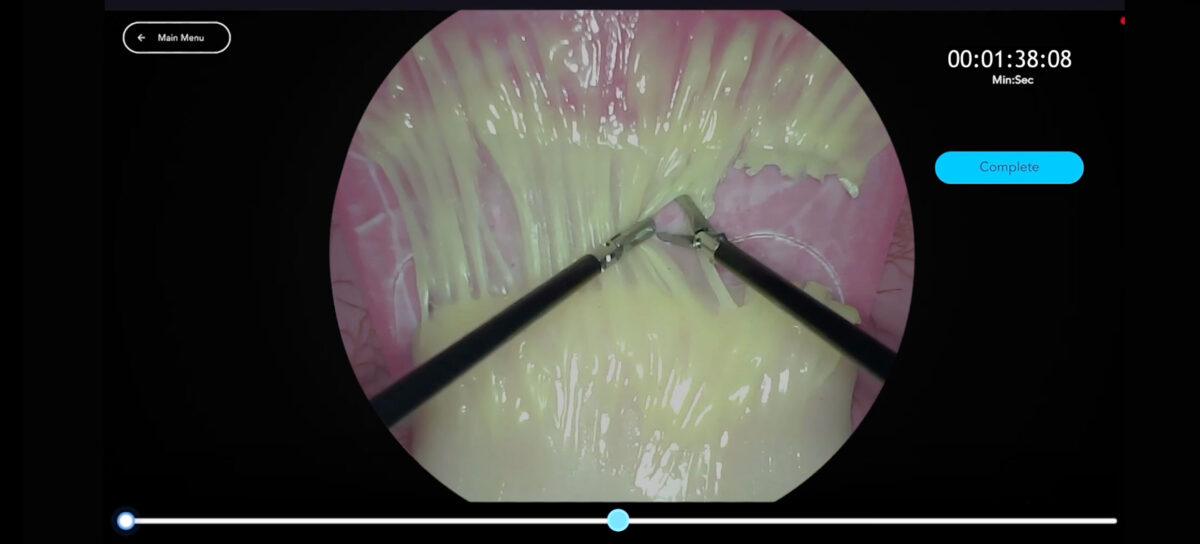
Practise essential dissection skills.
Adhesiolysis
Laparoscopic Adhesiolysis is the surgical approach to releasing adhesions from the abdominal wall and internal organs.
Adhesions are internal scar tissue which have bound to healthy parts of the abdomen from previous surgeries or conditions such as diverticulitus, endometriosis or pelvic inflammatory disease.
Left untreated, these adhesions can cause pain and restrict normal function of the organs affected.
Use blunt and sharp dissection to complete this module.
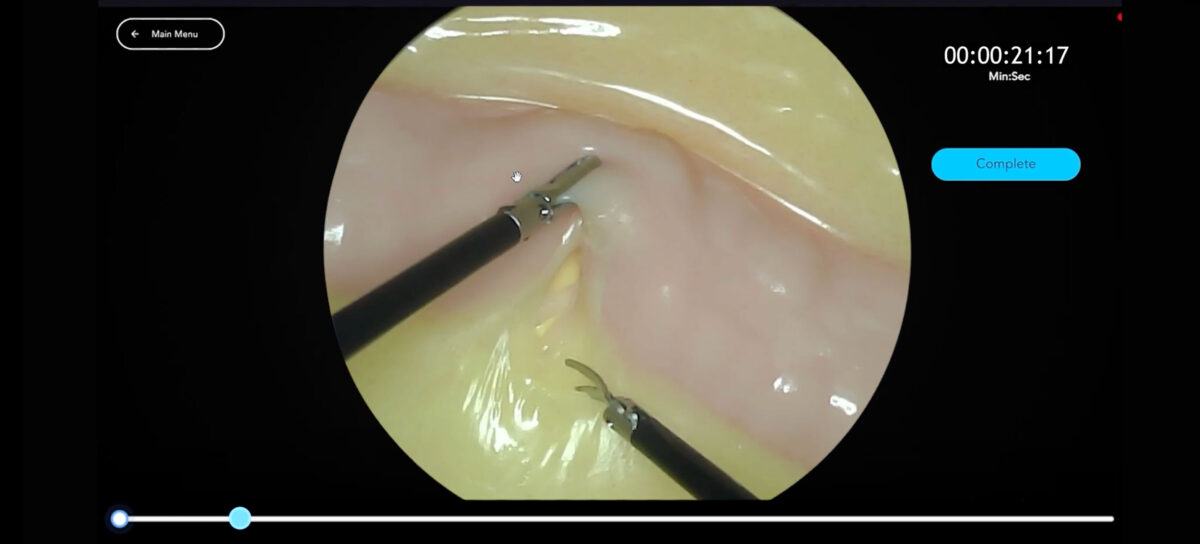
Full Mesocolic procedure
Mesocolic Dissection
The laparoscopic mesocolic dissection is a key component of colorectal surgery, performed to ensure en bloc resection of the mesocolon with intact vascular and lymphatic structures. It is commonly indicated for colorectal cancer but may also be performed for inflammatory conditions such as diverticulitis or inflammatory bowel disease.
This model will allow you to focus in on the key skills of dissecting the peritoneum and fat layers, identification and skeletalising the IMA and SMA structures, ligating the vessels and dissecting them before completing your dissection under the bowel.
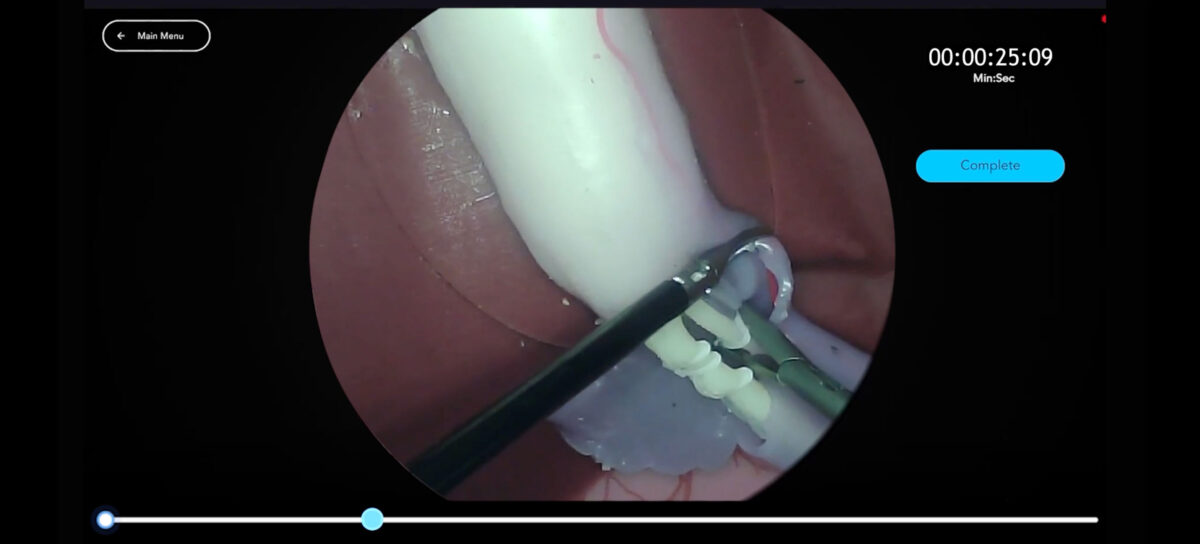
Dissect Calots triangle.
Cholecystectomy
Cholecystectomy is one of the most common procedures performed globally, often indicated for gallstones and related complications such as cholecystitis, biliary colic, and pancreatitis. The laparoscopic approach, introduced in the late 20th century, revolutionised gallbladder surgery by reducing recovery time, minimising postoperative pain, and improving patient outcomes. This module provides a high-fidelity simulation of a laparoscopic cholecystectomy, focusing on the key steps of the procedure within a controlled training environment, with operative metric and video recording. The simulator replicates critical components such as identification of anatomy, tissue dissection of calots triangle, identification of the critical view of safety, clipping/division of the cystic duct and artery and dissection of the gallbladder from the liver plate leading to gallbladder removal. The model enables learners to develop fundamental laparoscopic skills, including instrument handling, procedural flow and safe cholecystectomy.
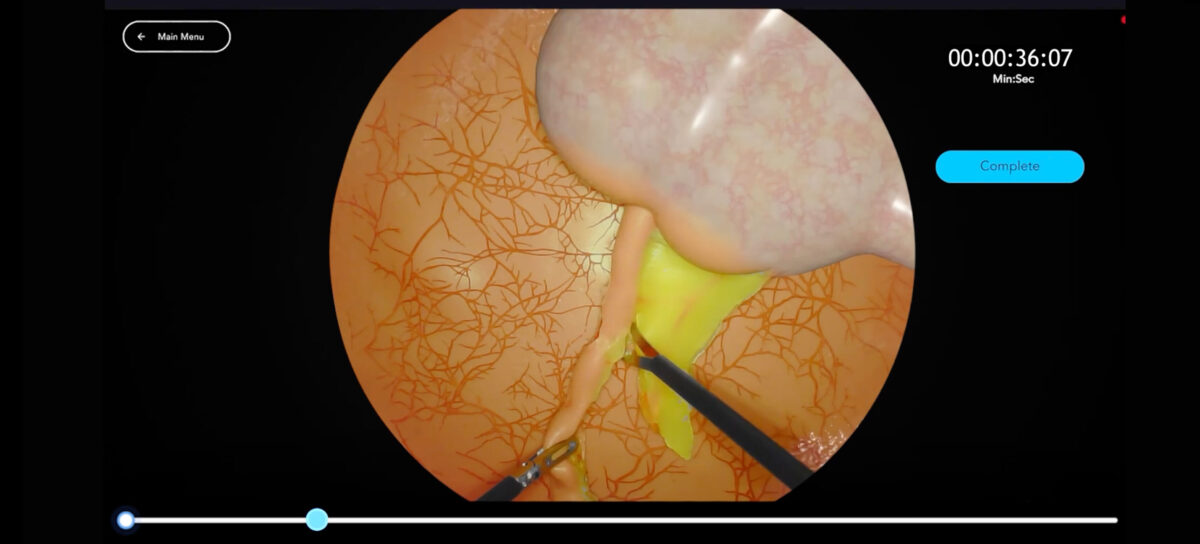
Full procedure for use with the LapAR.
Appendectomy
An appendectomy is a surgical procedure to remove the appendix. The most common reason someone would need an appendectomy is due to appendicitis, which is an inflammation of the appendix. This can lead to acute appendicitis, perforated appendix, appendiceal abscess, chronic appendicitis and as a preventative measure.
In this module, you will practice the skeletilisation of the appendicular arteries using blunt or sharp dissection of the mesoappendix, ligation of these vessel branches, dissection perpendicular to the appendix, applying ligation and removal of the appendix.
This model has been produced so you can approach the pathology in any way you wish, no particular method for completion is preferred.
Complete a full Appendectomy on this model, with Appendicular Artery embedded in the Mesoappendix.
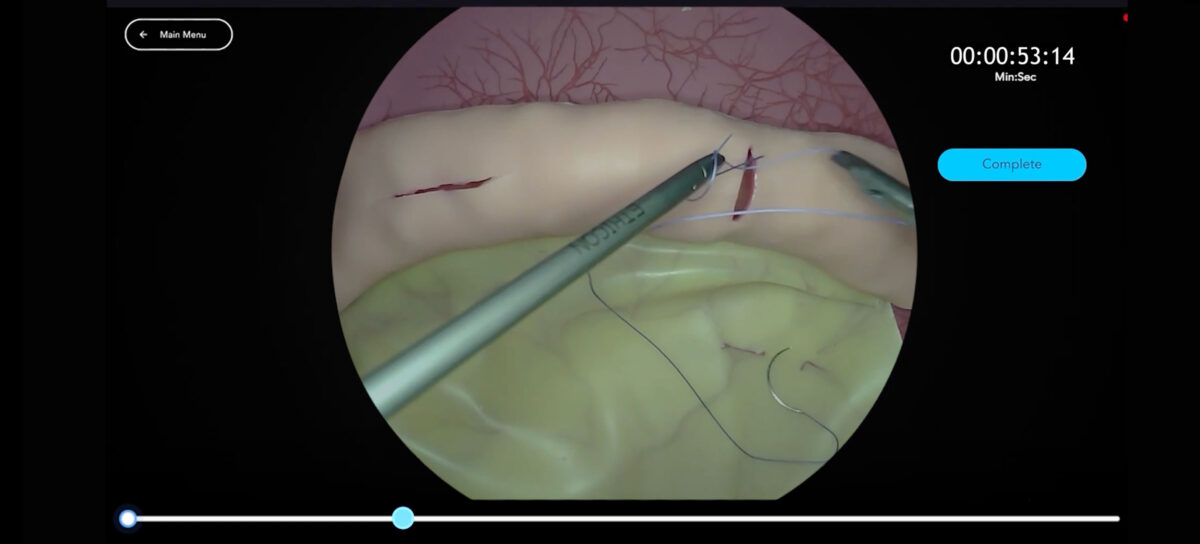
Practise your suturing on this model.
Bowel Enterotomy
In this module, you will be faced with a portion of small bowel with two pre-cut incisions for repair. You can also make your own incision along the length of the model, add obstructions and attempt in line stapling.
Small bowel injuries are a frequent occurrence in emergency surgery, and the skills you gain from this module will help other applications of suturing bowel in colorectal, upper GI and bariatric disciplines.
This model has been designed for multiple uses, and includes a mesh to ensure quality suturing practice can take place.
This model allows you to practice vertical and horizonal enterotomy closures on pre cut defects, as well as creating custom enterotomies.

Essential suturing skills.
Bowel Anastomosis
A Bowel Anastomosis is a step in a procedure where to ends of dissected bowel are joined together to enable proper bowel function. This may occur during a bowel resection case, or as part of a reversal of ileosomy or reversal of Hartmann’s procedure.
This model helps you focus on the traditional sutured Anastomosis - an essential skill of any aspiring surgeon. Alternatively, you can staple the model before starting, and over-stich the join - a skill used regularly to achieve haemeostasis and ensure a reliable Anastomosis.
Practise your suturing skills - side by side and end to end anastomosis possible on this model.
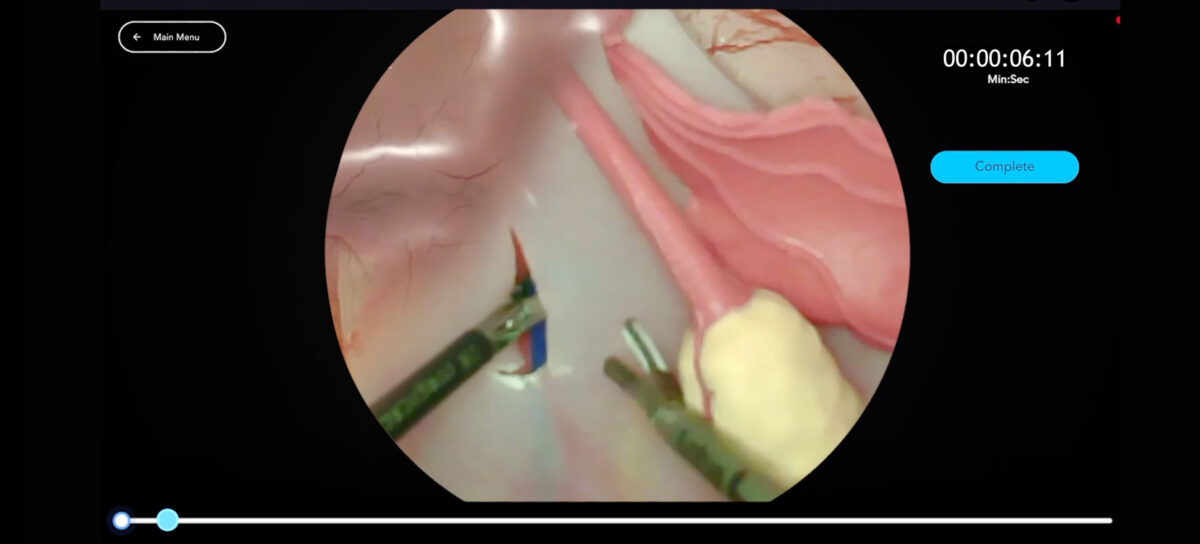
Advanced MIGS procedure to enhance dissection skills.
Pelvic Side Wall Dissection
This module allows the use to develop advanced MIGS skills by dissecting into the pelvic side wall to expose and identify the Ureter and Uterine Vessels.
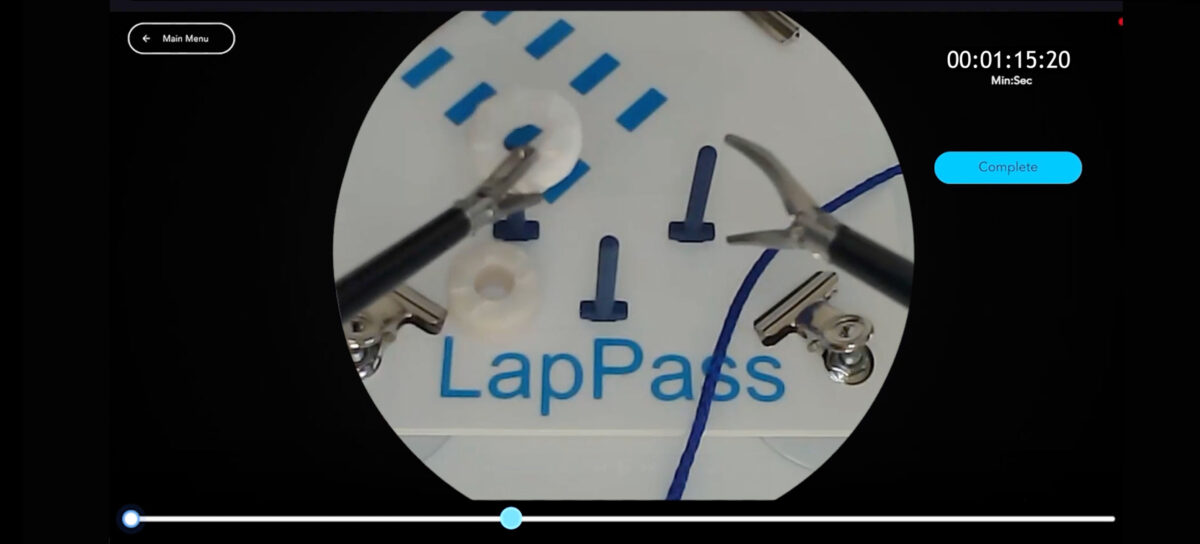
Key instrument handling skills.
LapPass Grasping and Manipulation
Task 1 – Grasping and Manipulation.
Time to complete - 4 minutes.
Key elements:
Spatial awareness
Pronation and supination
Tatctile feedback
Smooth performance
The Task: Moving 3 polo mints between 3 posts.
1. Floor to post using your left hand only
2. Moving from post 1 to 2 using right hand only with rotation of the polo
3. Moving from post 2 to 3 transferring from one hand to another in mid-air
4. Post 3 to the floor passing the mint along the string without toughing the floor
This module focusses on key instrument handling tasks, in line with the LapPass curriculum.

Basic cutting task.
LapPass Precision Cutting
Task 3 – cutting and accurate disc .
Time to complete - 3 minutes.
Cutting an accurate circle on the silicone pad, while keeping the dissection within the two perforated lines.
Essential Elements:
Precision cutting
Grasping and manipulation
Traction/counter traction
Notes:
Breaching the perforated lines will result in a fail
Scissors can swapped between hands intermittently
This module allows you to focus on the key skill of cutting laparoscopically. Use precision to complete the task in line with the LapPass curriculum.
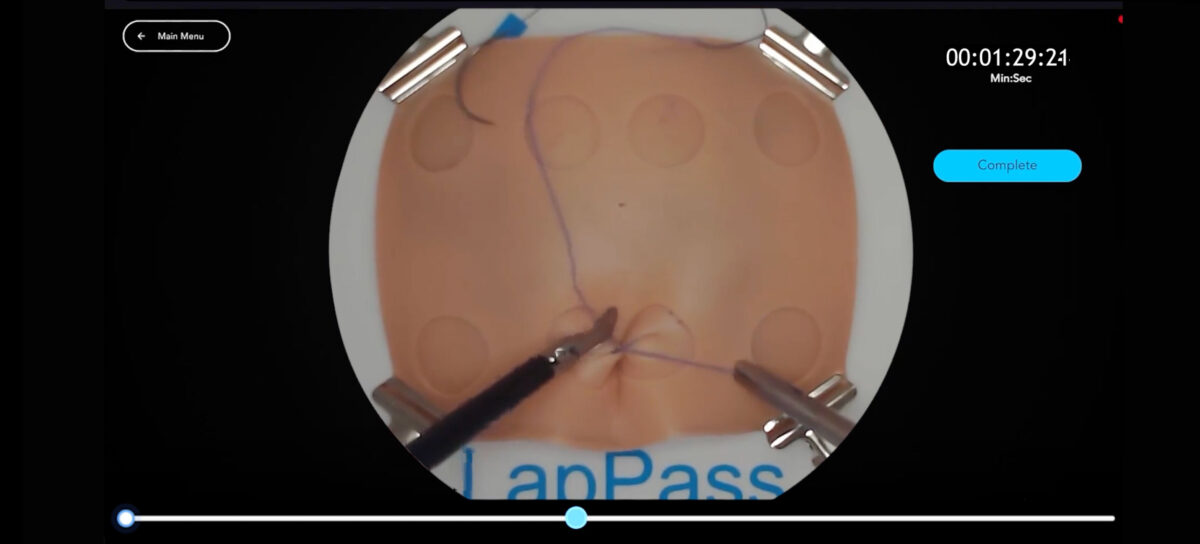
Basic suturing task.
LapPass Suturing
Task 4 – Suturing
Time to complete - 6 minutes
Place 2 sutures drawing 2 indented circles together securely under tension. Accepted knots: Szabo, reef knot, surgeons’ knot
Essential Elements:
Loading of needle drivers
Accurate suturing
Secure knot tying
Focus on your basic suturing skill on this module, in line with the LapPass curriculum.

Loop ligation basic training.
LapPass Tubal Ligation
Tine to complete - 8 Minutes.
Tying extracorporeal Roeder knots and placing them to simulate an appendicectomy.
1. Create and place 3 Roeder knots; two proximal and one distal
2. Divide the finger (appendix) between the placed knots
Essential Elements:
Proficiency in tying and placing of Roeder knots
Precision cutting
Notes:
The first loop can be tied and ready before the start of the exercise
Any failed loops must be retied
Inaccurate dissection of the tube will result in a fail
This module allows you to focus in on the key surgical skill of placing surgical loops to ligate anatomy. Intra and extracorporeal techniques are focussed on in line with the LapPass curriculum.

EMIGS L5 Module for suturing.
EMIGS L5 - Running Stitch
This module allows the surgeon to practise suturing and the running stich in line with the EMIGS curriculum.
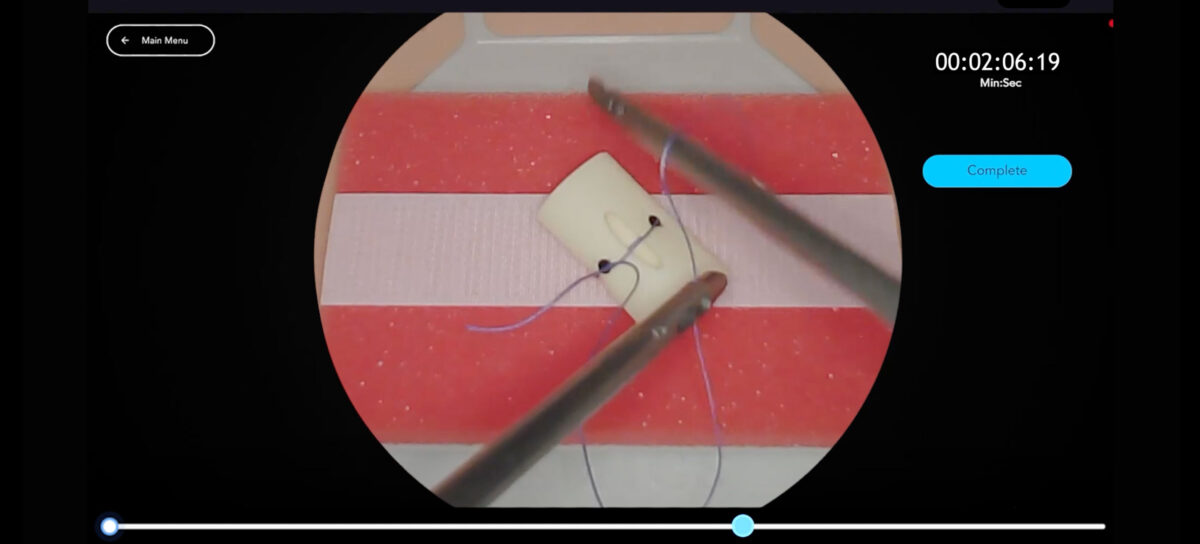
Practise the EMIGS Intracorporeal Knot module.
EMIGS L4 - Intracorporeal Knot Tying
This module allows the user to practise Intracorporeal knot tying in line with the EMIGS curriculum.
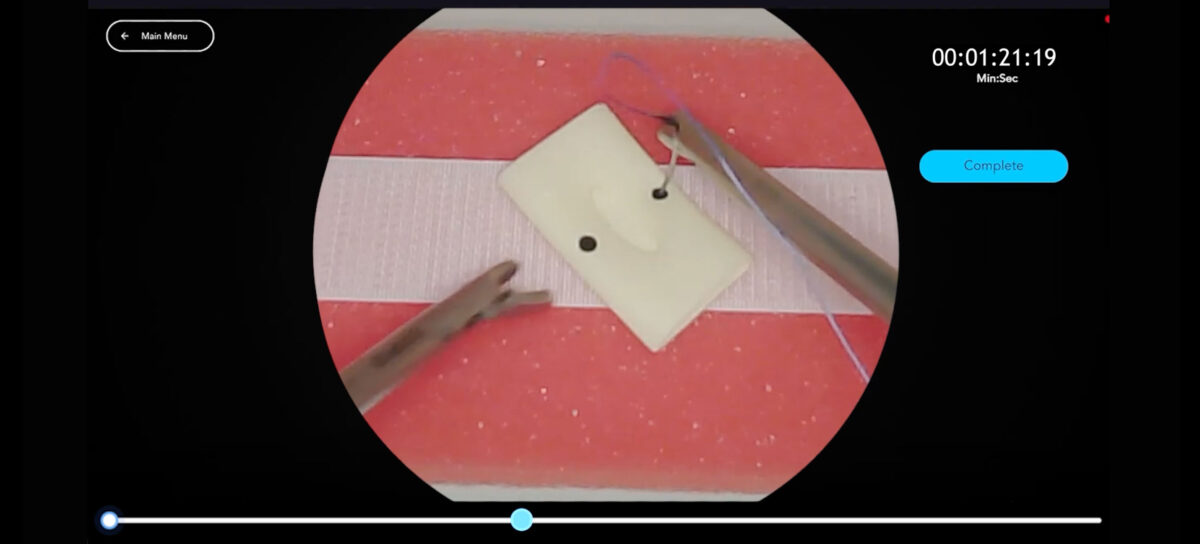
EMIGS Extracorporeal knot tying task.
EMIGS L3 - Extracorporeal Knot Tying
This module allows the surgeon to complete the EMIGS L3 tasks which focusses on Extracorporeal knot tying.
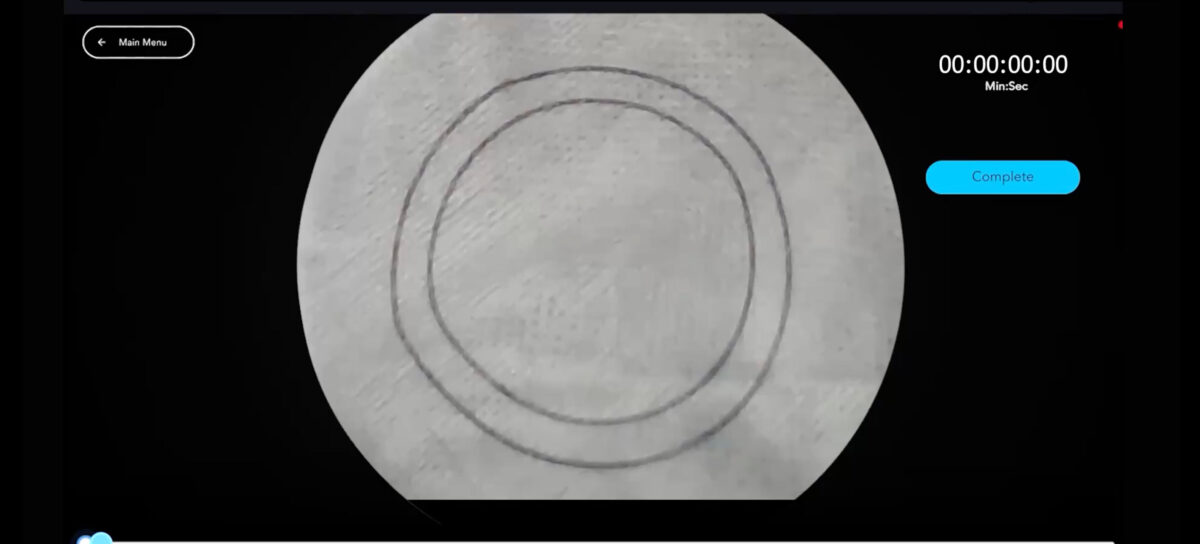
Basic cutting tasks for MIGS.
EMIGS L2 - Circle Cutting
This module allows the surgeon to complete the L2 EMIGS task which focusses on the cutting of a pre defined circle on gauze, in line with the EMIGS curriculum.
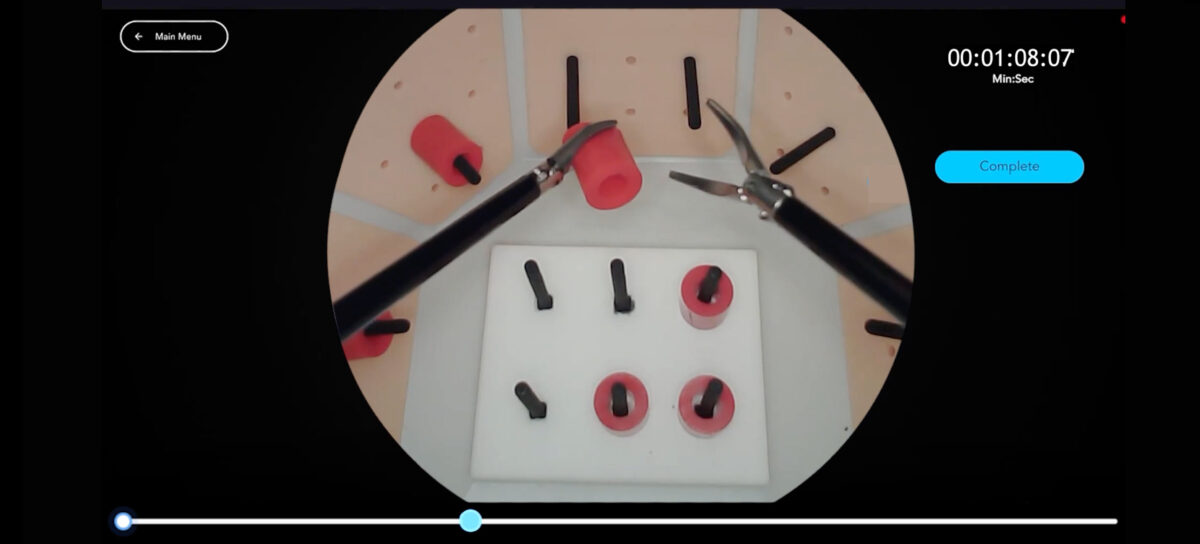
EMIGS Laparoscopic task.
EMIGS L1 - Peg Transfer
This module focusses on the basic grasping and manipulation skills required by the EMIGS curriculum.
Training modules.
Discover how LapAR Pro is guiding the way to surgical success.
We're breaking down the barriers between trainees, mentors and invaluable data to take a holistic approach to surgical training with natural haptics.
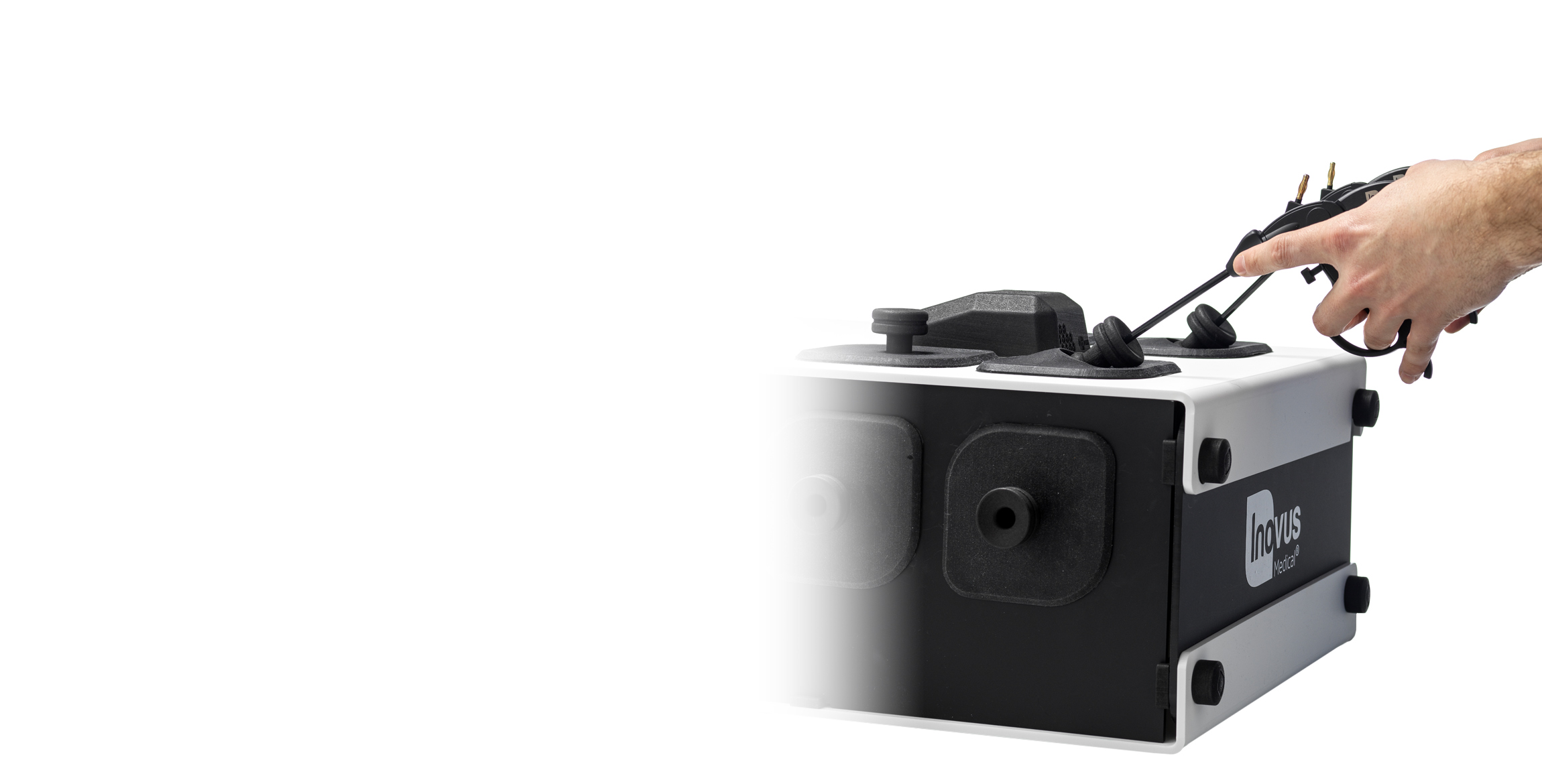
Natural Haptics
Practice with the tools you will use in the operating room and experience natural haptic feedback generated by synthetic soft tissues.
Objective Metrics
Instrument tracking technology records instrument movement while operating. Gain instant access to performance metrics in the Totum dashboard, allowing trainees and trainers to tailor training based on evidence.
Certification
LapAR Pro is accredited by the Royal College of Surgeons of England. Every hour of training earns one continuing professional development (CPD) point with certificates issued directly from Totum. Work towards proficiency in validated curricula including EMIGS and LapPass.
Video Review
Record your training and play it back in the Totum platform. View video footage with side-by-side objective metrics for a rich learning experience. Muti-directional, written feedback with video time stamping allows trainees and trainers to work on perfecting surgical technique.
Full procedures
Perform high fidelity, simulated full procedures across the specialities of general surgery and gynaecology. Work through the physical steps of full procedures with cognitive prompts provided along the way.
Immersive environments
Digital overlays interact with synthetic soft tissues to create highly immersive environments, streamed directly to the screen without need for headsets.